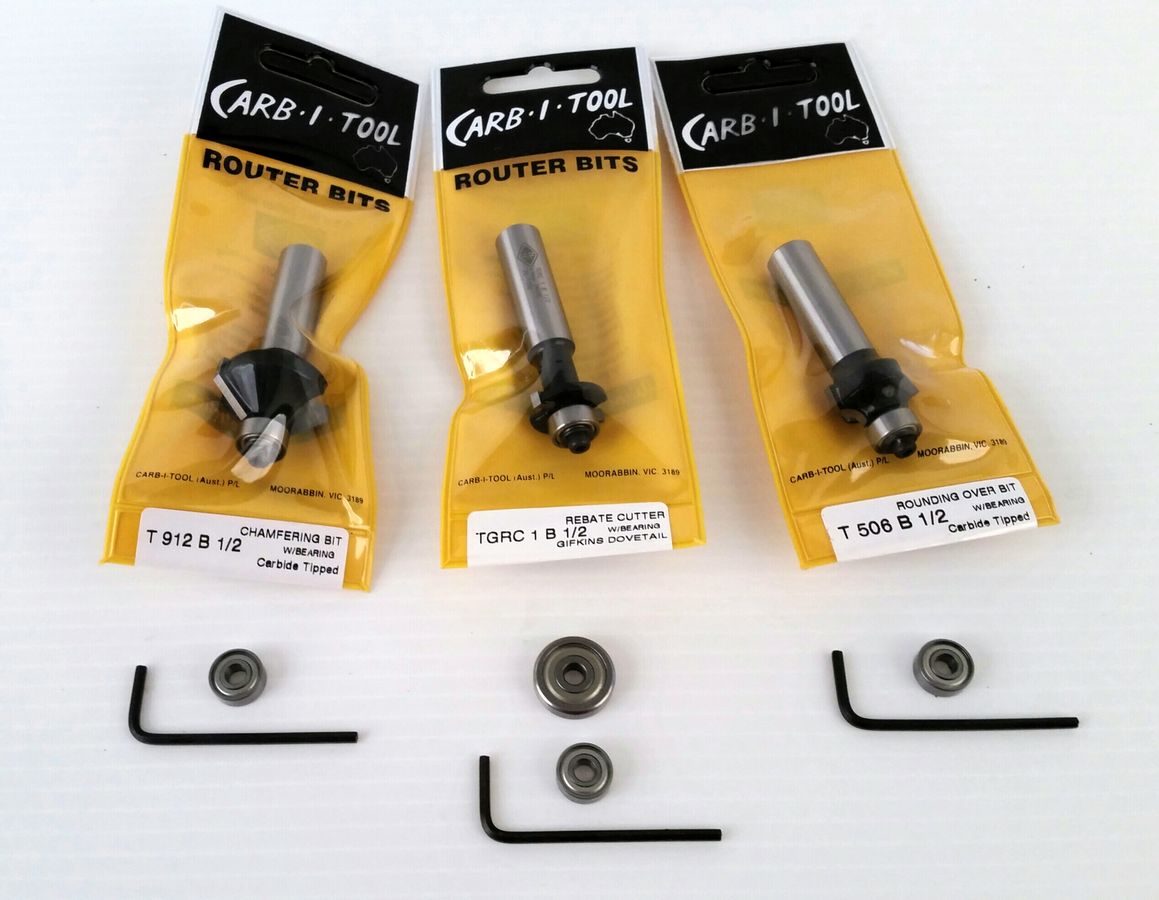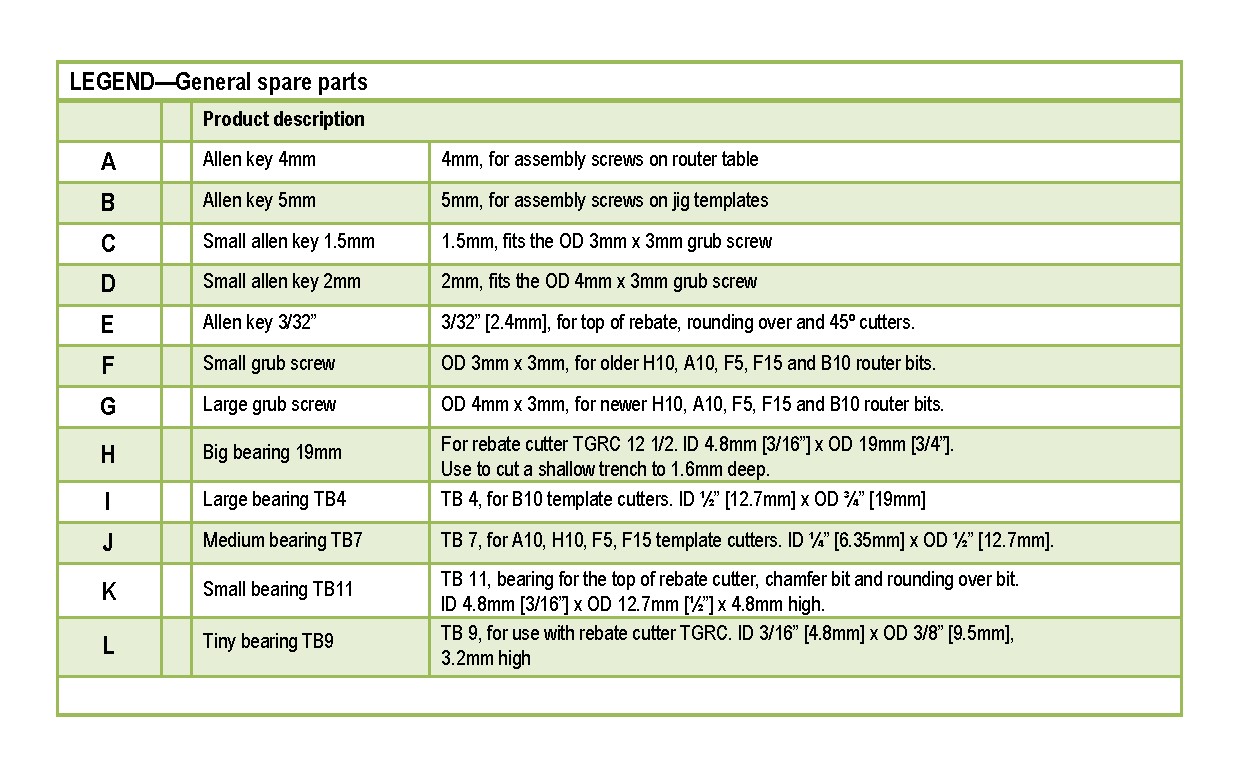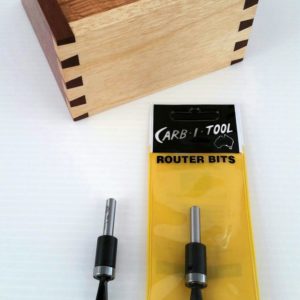Description
Big bearing 19mm
The big bearing assists, you, the box maker, to cut a box trench in two passes, using the rebate cutter. The first cut is shallow to protect your timber, the second cut finishes the trench to the required depth. See the box making tip below for more details.
Note: The price quoted is for the big bearing only. The rebate cutter is available for sale separately. The rebate cutter and big bearing are also part of our Ultimate cutter kit and Master cutter kit.
See centre large bearing in main image, and item H in the gallery and legend.
Please note: postage will be added to your purchase after we receive your order.
Box making tip: how to use the rebate cutter and bearings
We suggest you cut your trenches with a number of passes using different sized bearings. This method will be gentle on your soft timbers and minimise tear-out. It will also prolong the life of your cutter when you use dense timbers.
How to make beautiful trenches
[1] The rebate cutter is fitted with a TB11 top bearing. Firstly, take the bearing [TB11] off the top of the cutter. Put the big bearing [19mm] on the top of the rebate cutter to cut a shallow trench, 4mm high x 1.6mm deep.
[2] Then, return the small bearing [TB11] to the top of the cutter to cut the trench to 5mm deep.
[3] If you need to cut a trench deeper than 5mm, use the tiny bearing [TB9], which will cut the trench to 7mm deep.
Remember to go slowly—let the cutter and router do the work for you.
Cutter, bearing and collet care:
Prolong the life of your equipment and save money by following these simple steps.
[1] Bearings: Before every box making session, place a drop of sewing machine oil in the bearing to keep it moist. Do not use a drying agent like CRC. The bearing is not sealed, so sawdust and grime build up over time. If you don’t keep the bearing clean, it will seize, causing damage to the cutter and your template.
[2] Cutters: Scrub the cutter blades and the outside surface of the bearing with a toothbrush to remove resin and dirt build-up.
[3] Collet: Clean the router collet in the same way, placing a small drop of oil inside the collet to dissolve resin build-up.
[4] Grub screws: Regularly check that the grub screw in the side of the cutter has not vibrated loose. Alternatively, use a product like ‘Loctite’ to fix the grub screw in place. Hint: to glue in a grub screw, do it over a light coloured cloth on a table. Position the screw hole over the flat edge on the cutter collar. Place a small drop of ‘Loctite’ in the hole and screw in the grub screw.
IMPORTANT—WARNING
All Gifkins Dovetail cutters are designed for use in a table mounted router, and should not be used in a hand held router. We don’t guarantee cutters against breaking. The spiral cutter in particular, has a fine tip and should always be used in the table with a fence.
Take extra care to note the feed direction of the rebate cutter. With all cutting operations, the feed direction is opposite to the direction of motion of the cutting tips (i.e. opposite the direction of the tips as they enter the work piece).










Reviews
There are no reviews yet.